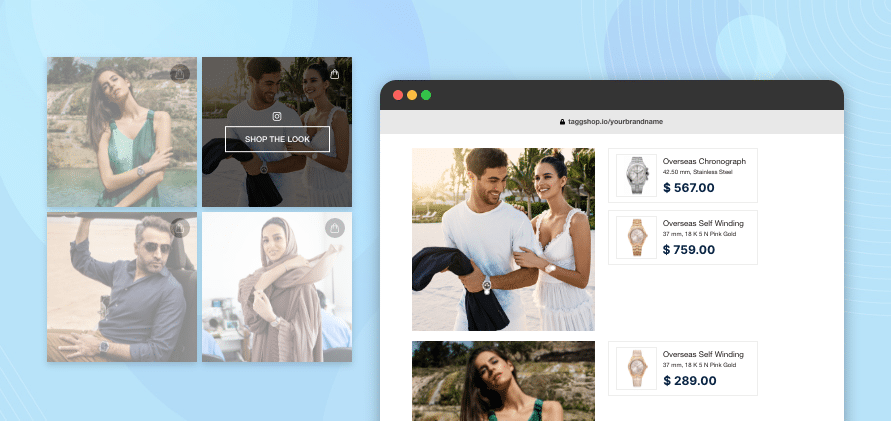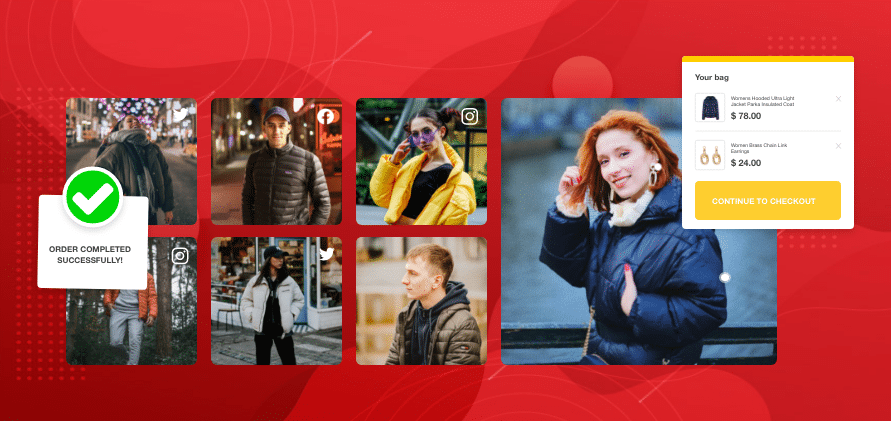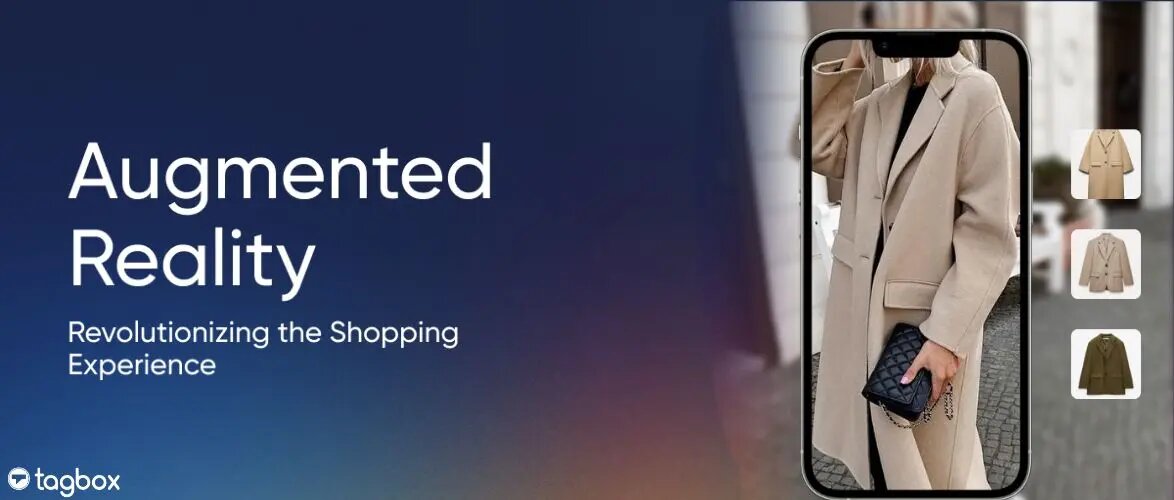Read summarized version with
eCommerce funnel or eCommerce sales funnel is the most underestimated yet most crucial aspect of your eCommerce marketing & customer acquisition process.
Believe it or not, on an average 97% of your consumers come to your eCommerce platform and leave without buying anything!
Given how costly it is to acquire one customer, the need for eCommerce sales funnel optimization becomes most crucial.
We have covered all aspects of eCommerce sales funnel in this blog to help you boost your eCommerce conversion rate, engagement, traffic value, & more.
eCommerce Sales Funnel Definition
Taggbox Commerce defines an eCommerce sales funnel as the process of turning a potential customer into an actual customer for the eCommerce brand. The funnel is a journey for consumers to decide and complete the transaction on an eCommerce website.
The eCommerce sales funnel is closely relevant to the consumer buying journey where eCommerce funnel is the process eCommerce brands implement to successfully acquire a customer.
The buyer’s journey is from the buyer’s perspective, where he makes evaluations, gains information gets insights and buys the products in a streamlined manner.
A user might complete the eCommerce funnel in minutes or even may take months to complete the funnel.
The design and flow of an eCommerce funnel is majorly the same across all brands or industries, but it might vary depending on strategy, design, or business industry.

Stages With 13 Strategies For Your eCommerce Sale Funnel
The stages of an eCommerce funnel are generally divided into the following sections:
- Awareness or Brand Discovery
- Consideration or User Engagement
- Decision or Product Purchase
- Retention or Customer Loyalty
1. Awareness Or Brand Discovery
This is where it all starts. When the consumer becomes aware of your eCommerce or online store.
When consumers realize that they need to buy a product or service to solve their problem, they search for a solution and become aware of your brand.
Your brand’s role is to capture the prospects interest successfully and attract it towards the consideration stage.
The consumers can gain awareness through your marketing activities on different channels like social media, search engines, digital ads, offline campaigns, word of mouth marketing, and endless other channels.

Your goal should be to make sure that your marketing material and efforts on these channels should be all about highlighting how your brand offers the perfect solution to consumers’ problems & needs.
Important Note: You must focus on targeting the interested audience or prospect audience rather than going for the vague audience base (which looks lucrative)
Key Strategies For Awareness Stage
1.1 Make Sure You Highlight USP
Be mindful that users look for what you have to offer that the other competitors can’t. So you must highlight your brand’s unique selling proposition.
1.2 I-D-I Model For Marketing
Follow the IDI model, which means identifying the key marketing channels, define what each channel has to offer, and invest in the channel with the best returns on your investment.
1.3 Promote Solution & Information
Content is the nervous system of present-day marketing strategies and is the most valuable way to attract visitors. So, promote your solutions and information through engaging content marketing.
Now, from the top of the funnel, we shall move to the middle of the funnel, i.e., the Consideration stage.
2. Consideration or User engagement
This is the stage that proves your marketing was successful and consumers are now considering buying your products or services. They are engaging with your websites and their pages.
Your goal here is to engage them with your eCommerce website and move them to the buying stage. This will require you to make efforts towards eCommerce optimization, visual-appeal, detailed information, offers, rewards, and more. AI solutions for eCommerce can segment customers in real-time, enhance upselling and cross-selling efforts, and deliver personalized product suggestions to increase engagement and conversion rates.
It will help you to instil confidence in interested consumers about their buying decision.
Key Strategies For Consideration Stage
2.1 Showcase Social Proof & Authenticity
Social proof is a psychological theory that states that people follow the actions of the masses. For you, social proof will mean showcasing reviews and user-generated content on your eCommerce website.
The social proof will showcase your brand’s reliability, value, credibility, and authenticity proven by your existing customers.
2.2. Shoppable Instagram & UGC Galleries
The best strategy for improving the eCommerce conversion rate is to publish shoppable Instagram and UGC galleries on eCommerce websites or online stores.

These shoppable social galleries work as an inspiration for consumers to explore how customers are using your products, show authenticity, and inspire your consumers to turn their inspiration into purchases.
2.3 Visual Commerce Solutions
Visuals play a huge role in influencing, engaging, and inspiring consumers. Visuals show the real-life value of products. So, visual commerce is the integration of visuals with shopping possibilities.
Making your visual content shoppable will allow users to understand the product better and make a more informed decision.
2.4 eCommerce Key Optimization
The optimization process is a crucial one where you must analyze & test your website navigation, speed, call to action, mobile responsiveness, content strategy, product discovery, etc.
The optimization of these key metrics will lead to a streamlined and seamless user experience on your ecommerce platform leading to result-driven user engagement.
Now let’s move on to the down-of-the-funnel where the user makes the buying decision.
3. Decision or Product purchase
You have successfully attracted and engaged the user through your eCommerce marketing funnel. When the consumer is ready to purchase products from your website, make sure you give them the right path and information.
The decision doesn’t necessarily mean buying the product, but it could mean that users have added products to their wishlist or cart. So you still need to make an effort to get the conversion.

Many eCommerce brands face challenges in turning the users who have added products to their wish lists/carts into their customers.
Key Strategies For the Decision Stage
3.1 A Positive Nudge
We all need a little assistance when we are on edge about a decision. Similarly, when users are taking time on your product pages or checkout pages, you must offer them instant assistance for which they are hesitant to purchase.
3.2 Cart Abandonment Retargeting
It is common for users to add products to their cart but later forget or opt out of buying them. So, it is essential to retarget these users to encourage them to complete these purchases.
Remember: You must not be spammy while retargeting.
3.3. Easy & Quick Checkout
The checkout process plays a key role in influencing conversion rate. So, make sure it is easy, simple, and quick to instantly convert users into customers. Integrating PISP payments can further streamline the process by enabling direct bank transfers without the need for card details, enhancing both speed and trust. Some businesses use Point-of-sale to make the checkout process easier. The best money transfer app, ensuring customers enjoy seamless, secure, and flexible payment experiences across every channel. Global Payments POS can accept a variety of payment methods whether customers shop online, in-store, or on the go.
When you have successfully converted a prospect into a customer, the most important stage begins now: retention or Customer loyalty.
4. Retention or Customer Loyalty
This is the bottom-of-the-funnel, or final step, of your eCommerce sales funnel. If you make consistent efforts, this step will give you the most value in terms of revenue and growth.
Retention means keeping your new or existing customers loyal to your eCommerce website. As a loyal customer is 9 times more likely to purchase again from your brand.
So, a successful retention strategy will mean higher customer lifetime value and continuous repeat purchases.
Brands and marketers rank customer loyalty so high that it gives more revenue and better return on investments.
Key Strategies For Retention Stage
4.1 Feedback & Customer Experience
Customer experience is a key influencer of customer loyalty. So, take feedback from customers, ask about their experience, and make efforts to improve it.
4.2 Rewards & Loyalty Program
Consumers are always attracted to rewards and loyalty programs that allow them to derive more value from their purchases. These programs encourage customers to be loyal to the brand and make repeat purchases.
4.3 Referral & Engagement
Referral marketing has something for everyone to get new prospects, and the referring customer gets bonuses, gifts, & rewards. Besides, you must constantly engage with your customers through different channels & strategies.
eCommerce Sales Funnel Examples
You have now understood what an optimal eCommerce sales funnel looks like and what strategies you must implement to leverage each step of the funnel successfully.
Now we have listed some best dropshipping eCommerce sales funnel examples to help you get a more complete and realistic view of the eCommerce funnel.
1. Eureka Street Furniture
It is a perfect eCommerce sales funnel example of a simple yet effective funnel. Eureka has created Shoppable Instagram & UGC galleries on their e-commerce website
They have called Shoppable UGC gallery as Inspiration and users can directly go from the homepage to their UGC gallery.

This is a perfect way to leverage consideration and decision stages by integrating point of sale with the point of purchase. You can explore their shoppable galleries here.
2. Mr Porter
The brand Mr Porter is a perfect eCommerce sales funnel example for the awareness stage. Mr Porter’s blogs perfectly educate the men (target audience) about how they can use Mr Porter products, among other things.
Mr Porter helps its customers learn to do basic fixing jobs, such as plumbing, wiring, and more, themselves.
With this knowledgeable content, they have added their own products smartly to make people aware and sell their products like offering work clothes for the aforementioned tasks.
3. Sephora Beauty Insider
Sephora’s loyalty program is immensely popular, with more than 17 million subscribers. This program generates a large chunk of Sephora’s annual revenue.
This is a perfect eCommerce sales funnel example for the retention stage. You provide loyalty and rewards programs for customers to encourage them to buy more and stay loyal to Sephora.
Customers can earn reward points on every purchase, and they have the freedom to choose how they want to spend their earned reward points, be it as gift cards or discounts or more.
Taggbox Commerce For eCommerce Sale Funnel
Taggbox Commerce is an eCommerce platform that offers brands the possibility of increasing their conversions and traffic and building brand trust through social commerce and shoppable social media solutions.
With Taggbox Commerce, you can turn your social media, UGC, or visual content into shoppable galleries and publish them on your eCommerce website to drive sales.
Ecommerce platforms and brands are increasingly using Taggbox Commerce to create and publish shoppable Instagram, shoppable UGC, visual commerce, and social commerce solutions on their websites.
As these shoppable galleries are a perfect e-commerce marketing strategy for different steps across e-commerce sales, the funnel is for awareness creation through social ads, emails, etc.
Use these shoppable galleries on the website to improve the consideration stage and decision stage through Inspiration, authenticity, information, and shoppability or promote it as part of your retention strategy.
Over to You
The strategies and examples have given detailed insights into creating an effective eCommerce funnel. It is not upon you to leverage these and boost your eCommerce conversion rate.
Leveraging all the strategies isn’t necessary, but you must review and optimize your eCommerce sales funnel and implement strategies to provide the best returns on investment.









